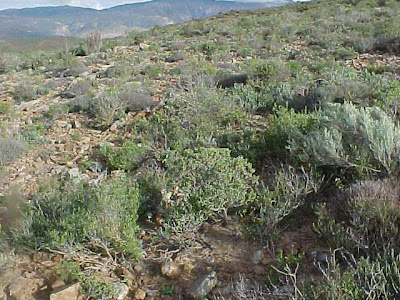Haworthia esterhuizenii was discovered by Mary Parisi and initially regarded as a form of Haworthia magnifica variety splendens (Bayer), and later as a form of Haworthia pygmeae.
Although the flowering time of Haworthia esterhuizenii corresponds in nature with that of Haworthia pygmeae and its allies, Haworthia pygmeae, lacks the translucent dots on the lower surface of the leaves.

The translucent dots also occur in a number of other species, e.g. Haworthia vincentii (which incidently grows only a few km from Haworthia esterhuizenii ), Haworthia paradoxa and Haworthia wimii.

Haworthia esterhuizenii is an attractive plant. Gerhard Marx in private communication has mentioned that the plants flower up to three times per year in cultivation.

 Habitat
HabitatAll images are the property of Izimakana Industries. Your source of Hoodia gordonii, Haworthia and Succulent Plants.
























